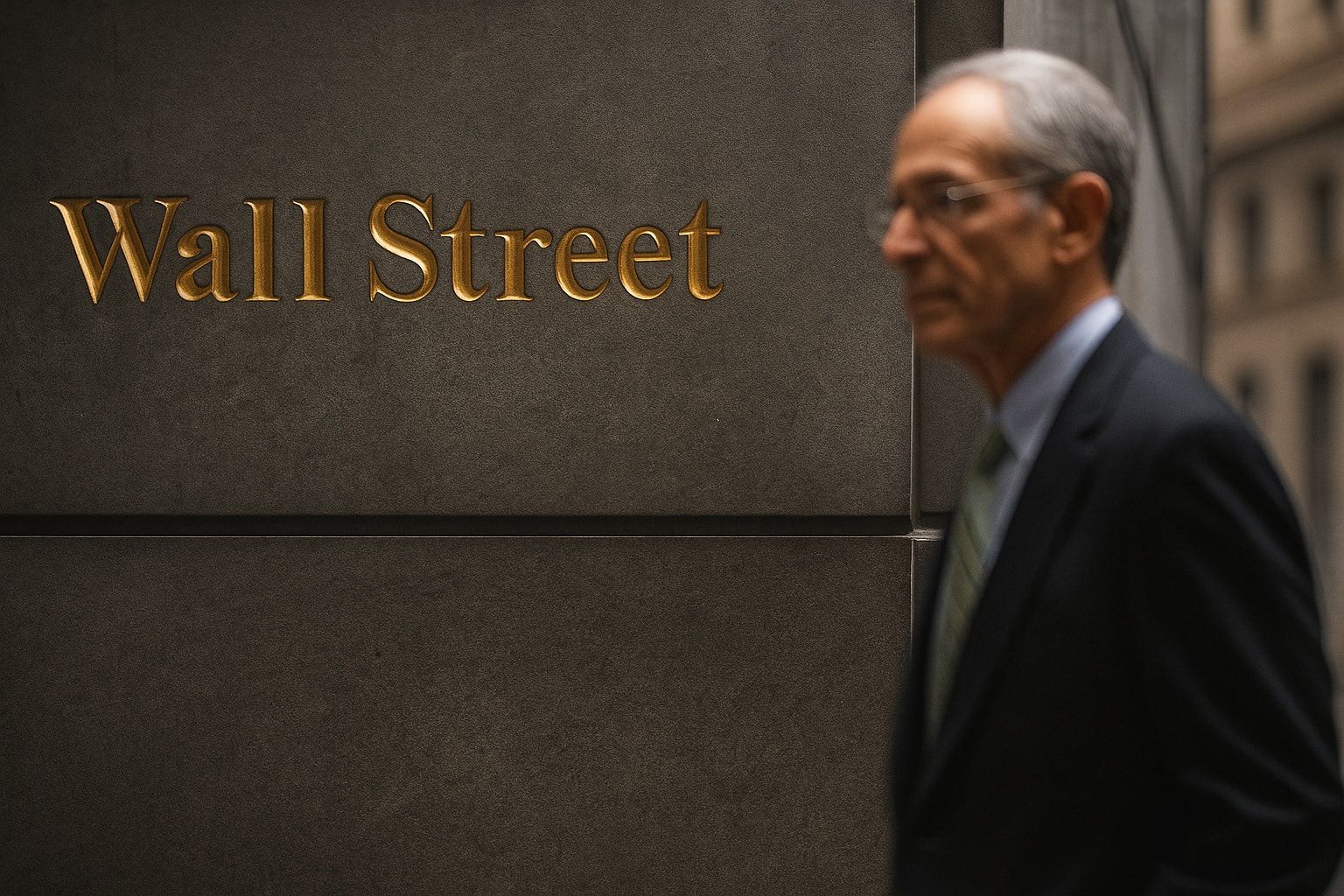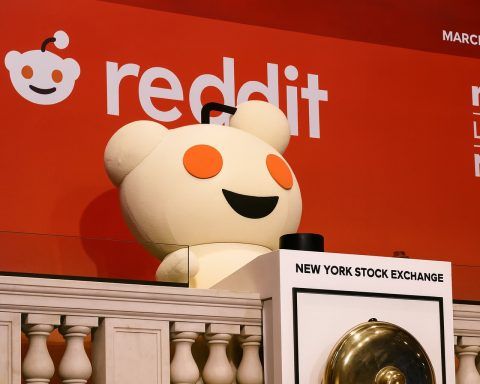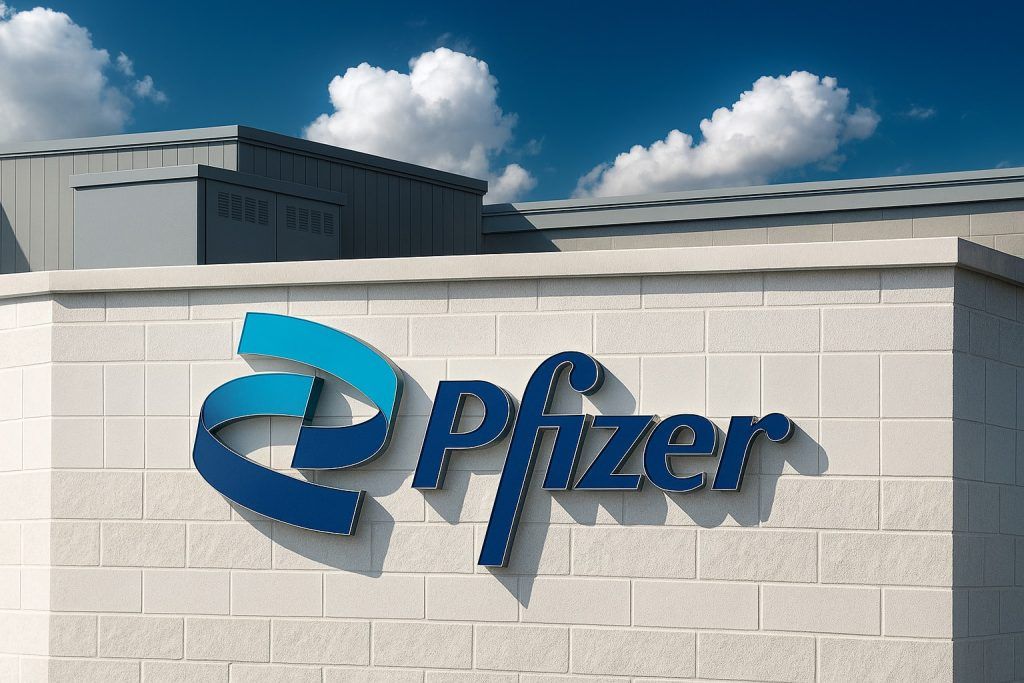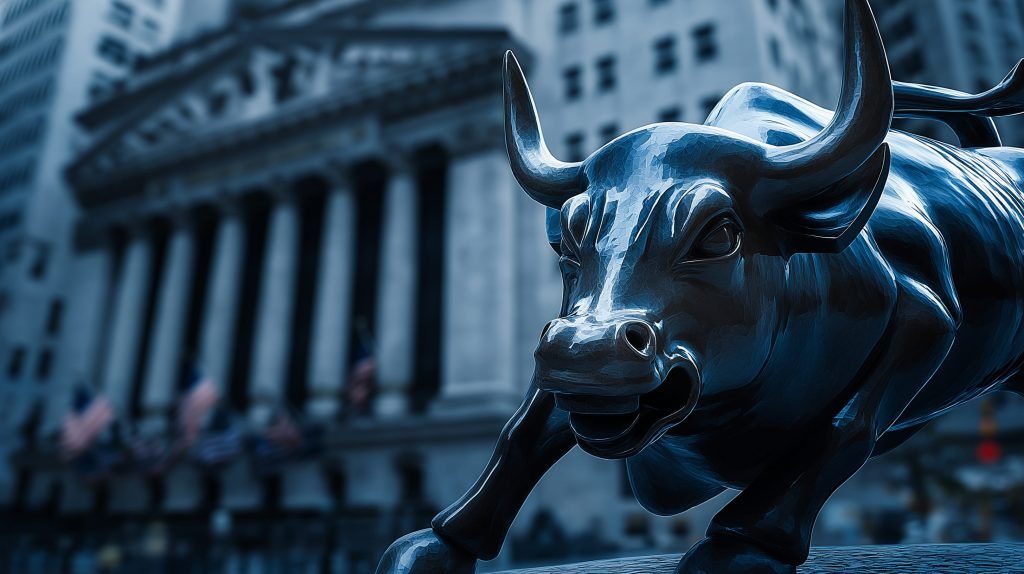- AI stock rally faces reckoning: Palantir’s share price tumbled ~7% despite strong earnings and an upbeat forecast, as analysts question its sky-high valuation [1] [2]. The data analytics firm’s stock had surged nearly 400% in the past year amid the AI frenzy [3].
- Wall Street sounds the alarm: CEOs of Morgan Stanley and Goldman Sachs cautioned that equity markets could be “heading toward a drawdown” after an AI-fueled run-up to record highs [4]. They warn tech valuations may be stretched, echoing broader concerns of an “AI bubble” forming [5] [6].
- Tech euphoria meets volatility: Major indexes hit all-time highs last week on booming Big Tech earnings and AI optimism [7]. But sentiment shifted as even market darlings like Nvidia, Alphabet, and Amazon slipped on Tuesday [8]. Fear gauges ticked up (the VIX hit a two-week high) as investors rushed to lock in profits [9].
- Overvalued or justifiable? Palantir now trades at an eye-watering 246× forward earnings, far above Nvidia’s ~33× [10]. One portfolio manager called a slight growth slowdown “a cause of concern given the stock’s lofty valuation” [11]. Still, other analysts insist Palantir’s blowout results and rising demand for its AI platforms can sustain its “unprecedentedly high valuation” [12].
- Outlook and wildcards: Investors are bracing for more volatility ahead. Upcoming tech earnings – like AMD (reporting after Tuesday’s close) and Qualcomm later this week – will test whether the AI rally can resume or falter [13]. Meanwhile, a looming government shutdown has halted key economic data, and Fed officials are split on a December rate cut, adding uncertainty to year-end market forecasts [14] [15].
Market Rally Hits a Wall of Warnings
After a red-hot October rally in U.S. stocks, November kicked off with a stark reality check. Last week, Wall Street’s major indexes were at all-time highs, buoyed by Big Tech earnings and surging investments in artificial intelligence [16]. But now top bankers are urging caution. Morgan Stanley CEO Ted Pick and Goldman Sachs chief David Solomon both warned the market may be due for a pullback, citing frothy tech valuations [17]. “Technology multiples are full,” Solomon observed, suggesting parts of the market have grown too exuberant. This sentiment echoes JPMorgan’s Jamie Dimon, who recently cautioned about a heightened risk of a “significant correction” in the next 6–24 months [18]. Dimon pointed to a “lot of things out there” – from geopolitical tensions to heavy government spending – fueling uncertainty [19]. Similarly, Bridgewater Associates’ co-chief investment officers noted that investors may be overlooking mounting risks despite the rally [20].
The message from these finance heavyweights is clear: the current bull run, driven largely by AI hype, may have outrun fundamentals. “It just feels like… the market is overbought and there’s a lot of overvalued stuff… concentrated in tech,” said David Morrison, senior market analyst at Trade Nation [21]. In other words, the breathtaking gains in tech stocks this year have left valuations looking stretched – and vulnerable. The cautious chorus has put investors on edge, prompting many to take profits. On Tuesday morning (Nov. 4), U.S. stock futures slid sharply, with S&P 500 and Nasdaq futures down roughly 1%+ and volatility spiking [22]. The optimism that sent stocks to records just days ago is giving way to a “healthy” pullback narrative [23], as even bulls concede a reset may be needed to prevent a bigger bubble from forming.
Palantir: From High-Flyer to Flashpoint
Few stocks embody 2025’s AI-stock euphoria like Palantir Technologies. The data analytics firm – often dubbed an “AI darling” – saw its shares quadruple in the past year, an almost +400% explosion in value [24]. Riding the AI wave, Palantir’s market cap soared as investors bet on its government and corporate AI platforms. The company’s third-quarter earnings report this week appeared to justify some of the hype: Palantir delivered revenue of $1.18 billion (up 63% YoY) and $0.21 earnings per share, soundly beating analyst forecasts [25]. It even raised its full-year revenue guidance for the third time in 2025, now expecting about $4.4 billion sales [26]. And crucially, Palantir projected fourth-quarter revenue of ~$1.33 billion, topping Wall Street’s ~$1.19 billion estimate [27] – a sign of robust demand as AI adoption accelerates.
Yet instead of celebrating, the market sold the news. Palantir’s stock, which hit a record high in regular trading on Monday, quickly reversed course. After initially popping higher on the earnings release, shares gave up gains to close only ~1% up in choppy after-hours trade [28]. By Tuesday’s pre-market, Palantir plunged as much as 7% below its prior close [29], dragging on the broader tech sentiment. Why would a company beating expectations and guiding higher see its stock sink? The answer lies in valuation fears. Even after recent dips, Palantir’s valuation looks stratospheric: the stock trades around 246 times forward earnings, an eye-popping multiple even in the tech world [30]. (For context, Nvidia, another AI superstar, trades at about 33× earnings [31].)
Some analysts worry Palantir’s growth, while impressive, may not be enough to justify such a rich price. The company expects its revenue growth to slow slightly next quarter (to ~61% YoY from 63%), which “is a cause of concern given the stock’s lofty valuation,” warned Carson Group’s Blake Anderson [32]. In other words, when a stock is priced for perfection, even a hint of growth deceleration can spook investors. There’s also the question of how much of Palantir’s AI opportunity is already “priced in” after its huge run-up. Gil Luria of D.A. Davidson, however, offered a more upbeat take: Palantir’s results, in his view, met the high expectations “required to keep shares” trading at these unprecedented levels [33]. The company’s bulls point to its strengthening fundamentals – from new defense contracts to a recent partnership with Nvidia to speed up AI analytics [34] – as evidence that Palantir is transforming excitement into real revenue. Even U.S. Army units have been directed to use Palantir’s platforms, executives noted, underscoring its entrenchment in government AI spending [35].
Ultimately, Palantir has become a flashpoint in the broader debate: is the AI stock boom sustainable, or are investors chasing dreams? The stock’s post-earnings stumble suggests even market darlings aren’t immune to gravity. Palantir’s slide wiped out billions in market value within hours, serving as a reminder that when valuations are extreme, good news may already be baked in – or even not good enough.
AI Boom: Revolution or Repeat of the Dot-Com Era?
The surge in enthusiasm around generative AI this year has drawn inevitable comparisons to the late-1990s dot-com bubble [36]. In both cases, investors poured into tech stocks on visions of transformative growth. This time, the catalyst is AI – from large language models to AI-driven enterprise software – and the money flowing into the sector is staggering. Citigroup analysts estimate that tech giants’ AI-related infrastructure spending could exceed $2.8 trillion by 2029, a sharp increase from prior forecasts [37]. Big deals underscore the trend: just this week, OpenAI (creator of ChatGPT) inked a 7-year, $38 billion cloud contract with Amazon Web Services [38], highlighting how even the largest corporations are doubling down on AI investments.
With so much hype (and capital) swirling, some market veterans are uneasy. Is today’s AI frenzy a bubble destined to burst? The warning signs resemble the dot-com era: soaring valuations detached from near-term earnings, a rush of speculative investment, and a handful of hot companies driving outsized market gains. In fact, the AI-driven rally has been so powerful that Nvidia – the chipmaker at the heart of the AI boom – recently became the first company in history to hit a $5 trillion market valuation [39]. Such milestones evoke memories of 1999’s exuberance before the fall.
However, many experts argue “this time is different” – at least in some respects. Unlike the profitless startups of the dot-com era, today’s AI leaders (Amazon, Alphabet, Microsoft, Nvidia, etc.) are established firms with massive revenues and real profits [40]. Even Palantir, while richly valued, is posting positive earnings and >60% growth. This suggests a firmer fundamental foundation under the AI trend. “Some analysts say the current AI boom differs from the dot-com era, as the leading companies driving it are supported by solid earnings and tangible business performance,” Reuters notes [41]. In other words, the AI revolution is producing actual economic value – not just eyeballs and clicks as in the late ’90s. The key question is whether growth can catch up to expectations before investor optimism turns to panic. If AI truly transforms industries as promised, the recent pullback could prove a temporary hiccup. But if revenue trajectories disappoint, richly priced AI stocks may have much further to fall. The balance between innovation and speculation will determine if this is a healthy boom or a dangerous bubble.
Bracing for Volatility: What Comes Next
After months of steadily climbing stocks, volatility is back on traders’ radar. The market’s fear index (VIX) spiked to a two-week high as of Nov. 4 [42], and strategists are urging clients to buckle up for choppier conditions. A critical period lies ahead in the closing months of 2025. In the very near term, earnings reports from other tech heavyweights could sway market mood for better or worse. Advanced Micro Devices (AMD) was set to report results Tuesday after the closing bell, and Qualcomm later in the week [43]. These chipmakers are deeply tied to the AI boom (supplying the hardware that powers AI workloads), so any surprise slowdowns or upbeat forecasts from them will color investors’ view on the entire AI sector. Additionally, other notable companies like Shopify, Uber, and Spotify just released earnings with mixed receptions – Shopify and Uber stock sank on underwhelming Q3 numbers, while Spotify jumped after projecting a profitable Q4 [44]. Such disparate reactions hint at a market that is rewarding clear winners but punishing any shortfalls in this nervous climate.
Macro-economic factors are also poised to play a decisive role. The Federal Reserve completed an interest rate cut in late October, yet Fed officials are now sending mixed signals about the next move [45]. Chicago Fed President Austan Goolsbee said he’s “on the fence” about another cut in December given still-high inflation, whereas another Fed governor argued policy is “too restrictive” already [46]. This split has traders second-guessing their bets: the market-assigned probability of a December rate cut slid to about 72% (down from 90% a week prior) as confidence wavered [47]. Interest rates heavily influence stock valuations, especially for high-growth tech names – lower rates tend to justify higher stock multiples, so if rate cuts are seen as less likely, that can remove some fuel from the stock rally. At the same time, a looming U.S. government shutdown is injecting uncertainty. With many federal agencies partially closed, the flow of economic data has dried up, leaving investors and the Fed “in the dark” on some key indicators [48]. Crucial reports like the JOLTS job openings and even the official payrolls numbers might be delayed, forcing the market to rely on private data (like the ADP jobs report) to gauge the economy [49] [50]. This data vacuum could amplify swings if any unexpected numbers (or policy news) hit the wires.
Going forward, the big question is whether this recent stumble is a mere speed bump or the start of a deeper correction. Optimists note that over 83% of S&P 500 companies reporting Q3 earnings beat expectations [51], a sign that corporate America is delivering strong results that could support stocks. Moreover, if inflation continues to cool and the Fed does ease up in coming months, it could reignite the bulls. Pessimists, however, focus on lofty valuations and macro risks – arguing that a lot of good news is already priced in, and any disappointment could trigger a sharper sell-off. Wall Street veterans seem to agree on one point: some froth needed to come out of the market. Indeed, even those warning of a pullback describe it as potentially “healthy” – a chance to shake out speculators and reset valuations [52]. For everyday investors, the takeaway is to stay vigilant. The rest of 2025 may see choppier trading and rapid sector rotations as the market seeks equilibrium between AI-driven enthusiasm and economic reality.
Bottom line: The AI stock boom that lifted markets to new heights is entering a more challenging phase. Palantir’s stumble and the big bank warnings have put everyone on notice that fundamentals – not just hype – will drive the next act. If the AI revolution lives up to its promise, current jitters could prove short-lived, with leadership by real earnings winners. But if the “AI bubble” thesis is right, investors might be glad they heeded the early warnings. For now, caution is in the air on Wall Street, as a high-flying market confronts the limits of gravity. The coming weeks of data, decisions, and earnings will help reveal whether this bull run still has legs – or if it’s finally running out of steam [53] [54].
References
1. www.reuters.com, 2. www.reuters.com, 3. www.reuters.com, 4. www.reuters.com, 5. www.reuters.com, 6. www.reuters.com, 7. www.reuters.com, 8. www.reuters.com, 9. www.reuters.com, 10. www.reuters.com, 11. www.reuters.com, 12. www.reuters.com, 13. www.reuters.com, 14. www.reuters.com, 15. www.reuters.com, 16. www.reuters.com, 17. www.reuters.com, 18. www.reuters.com, 19. www.reuters.com, 20. www.reuters.com, 21. www.reuters.com, 22. www.reuters.com, 23. www.reuters.com, 24. www.reuters.com, 25. www.reuters.com, 26. www.reuters.com, 27. www.reuters.com, 28. www.reuters.com, 29. www.reuters.com, 30. www.reuters.com, 31. www.reuters.com, 32. www.reuters.com, 33. www.reuters.com, 34. www.reuters.com, 35. www.reuters.com, 36. www.reuters.com, 37. www.reuters.com, 38. www.reuters.com, 39. www.reuters.com, 40. www.reuters.com, 41. www.reuters.com, 42. www.reuters.com, 43. www.reuters.com, 44. www.reuters.com, 45. www.reuters.com, 46. www.reuters.com, 47. www.reuters.com, 48. www.reuters.com, 49. www.reuters.com, 50. www.reuters.com, 51. www.reuters.com, 52. www.reuters.com, 53. www.reuters.com, 54. www.reuters.com












